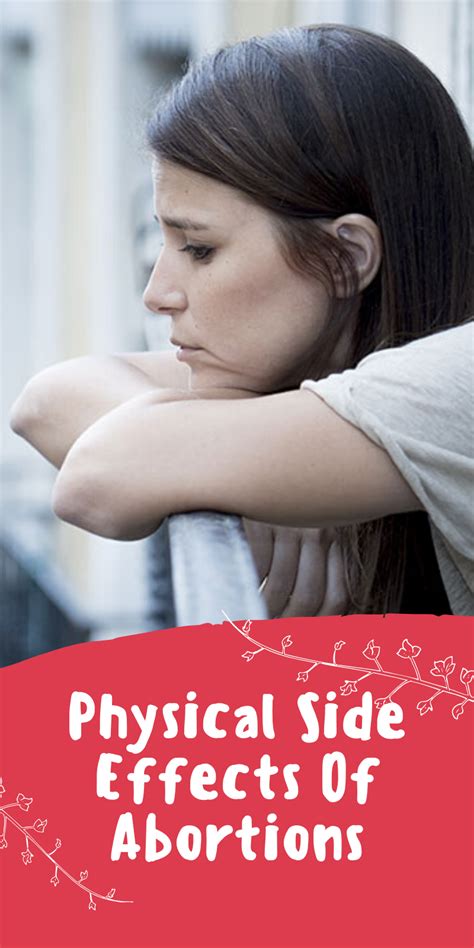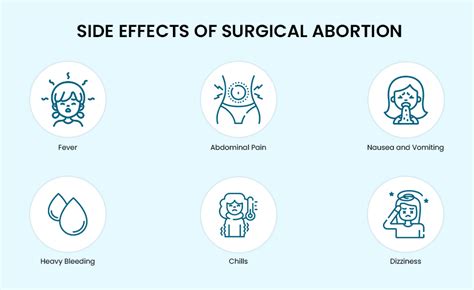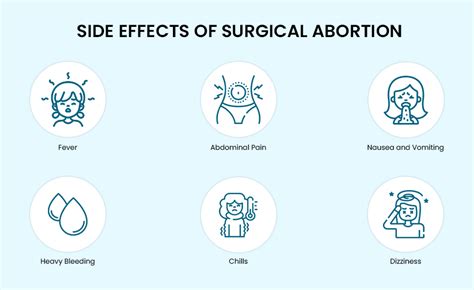Intro
Discover the 7 abortion side effects, including physical and emotional risks, complications, and long-term consequences, to make informed decisions about reproductive health and womens wellness.
The topic of abortion is complex and multifaceted, involving not only medical considerations but also ethical, legal, and emotional aspects. Abortion, the termination of a pregnancy, can be a deeply personal and sometimes necessary decision for many individuals. However, like any medical procedure, it comes with potential side effects and risks that are crucial to understand. Recognizing these side effects is essential for making informed decisions and for healthcare providers to offer comprehensive care. The importance of discussing abortion side effects lies in promoting transparency, ensuring patient safety, and fostering a supportive environment for those who undergo the procedure.
The decision to have an abortion is rarely taken lightly, and individuals considering this option often seek as much information as possible about what to expect. This includes understanding the potential physical and emotional side effects, which can vary significantly from person to person. While some may experience minimal side effects, others may face more significant challenges. It's also worth noting that the type of abortion procedure, whether medical or surgical, can influence the nature and severity of side effects. Being aware of these factors can help individuals prepare and navigate their post-abortion care more effectively.
Understanding the complexities of abortion side effects is also vital for healthcare providers. By being knowledgeable about the potential risks and side effects, medical professionals can offer better support, monitor patients more effectively, and provide timely interventions when necessary. This not only improves patient outcomes but also contributes to a more compassionate and informed approach to abortion care. The discussion around abortion side effects should be approached with sensitivity and a commitment to providing accurate, unbiased information. This allows individuals to make informed decisions about their reproductive health and well-being.
Introduction to Abortion Side Effects

Types of Abortion Procedures
The type of abortion procedure can significantly influence the side effects experienced. Medical abortion, which involves taking medication to terminate the pregnancy, and surgical abortion, which involves a procedure to remove the pregnancy, have different profiles of potential side effects. Medical abortion, for example, is known for causing cramping and bleeding, similar to a heavy menstrual period, as the body expels the pregnancy. Surgical abortion, while generally safe, carries risks associated with any surgical procedure, including infection and reactions to anesthesia.Physical Side Effects of Abortion

Managing Physical Side Effects
Managing physical side effects is crucial for recovery and comfort. This can include: - Using pain relievers as directed by a healthcare provider to manage cramping and pain. - Resting and avoiding strenuous activities to help the body recover. - Following a healthcare provider's instructions regarding sexual activity, bathing, and exercise. - Monitoring bleeding and reporting any concerns, such as heavy bleeding or large clots, to a healthcare provider.Emotional and Psychological Side Effects

Coping with Emotional Side Effects
Coping with emotional side effects involves recognizing that feelings are valid and seeking support when needed. This can include: - Talking to a trusted friend, family member, or mental health professional about feelings and experiences. - Joining a support group to connect with others who have had similar experiences. - Engaging in self-care activities that promote emotional well-being, such as exercise, meditation, or creative pursuits. - Allowing oneself time to process emotions and acknowledging that healing is a journey.Long-Term Effects of Abortion

Mitigating Long-Term Effects
Mitigating long-term effects involves comprehensive post-abortion care and support. This includes: - Follow-up appointments with healthcare providers to monitor physical health and address any concerns. - Access to counseling or therapy to support emotional and psychological well-being. - A supportive network of family, friends, or support groups to help navigate any challenges. - Engaging in activities that promote overall health and well-being, such as regular exercise, a balanced diet, and sufficient sleep.Conclusion and Next Steps

For those who have undergone an abortion, it's vital to remember that you're not alone. Reaching out to healthcare providers, support groups, or mental health professionals can provide valuable guidance and care. Remember, healing and recovery are unique to each individual, and seeking help is a sign of strength.
What are common physical side effects of abortion?
+Common physical side effects include cramping, bleeding, nausea, fatigue, and changes in bowel movements.
How can emotional side effects of abortion be managed?
+Emotional side effects can be managed by talking to a trusted individual or professional, joining a support group, engaging in self-care activities, and allowing time to process emotions.
Are there long-term health risks associated with abortion?
+There is no conclusive evidence linking abortion to long-term physical health risks such as infertility or breast cancer. Emotional and psychological long-term effects can vary significantly among individuals.
What support is available for those who have undergone an abortion?
+Support includes follow-up appointments with healthcare providers, counseling or therapy, support groups, and a network of family and friends.
How can I cope with the decision to have an abortion?
+Coping with the decision involves recognizing your feelings, seeking support from trusted individuals or professionals, and engaging in self-care activities that promote emotional well-being.
We invite you to share your thoughts, questions, or experiences regarding abortion side effects in the comments below. Your input can help create a more supportive and informed community. If you found this article helpful, please consider sharing it with others who might benefit from this information. Together, we can foster a more compassionate and understanding environment for discussing reproductive health and abortion.
